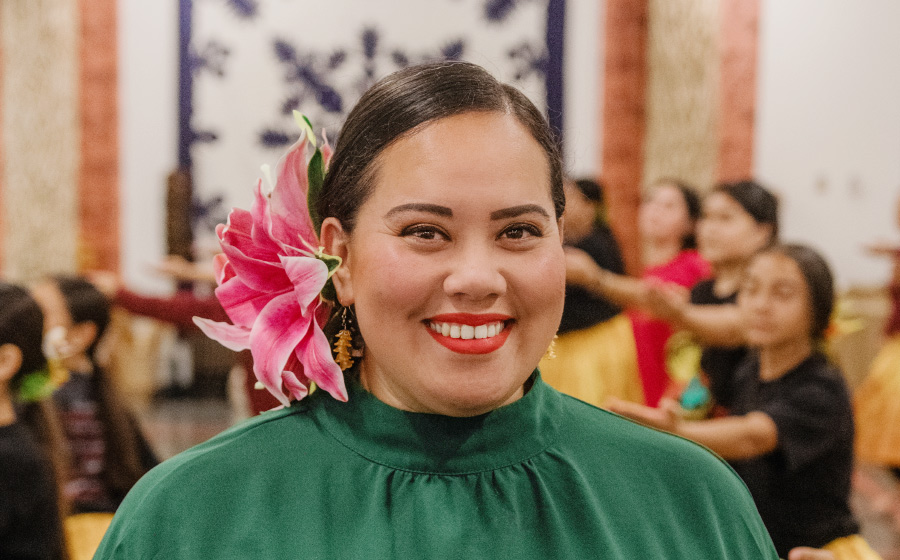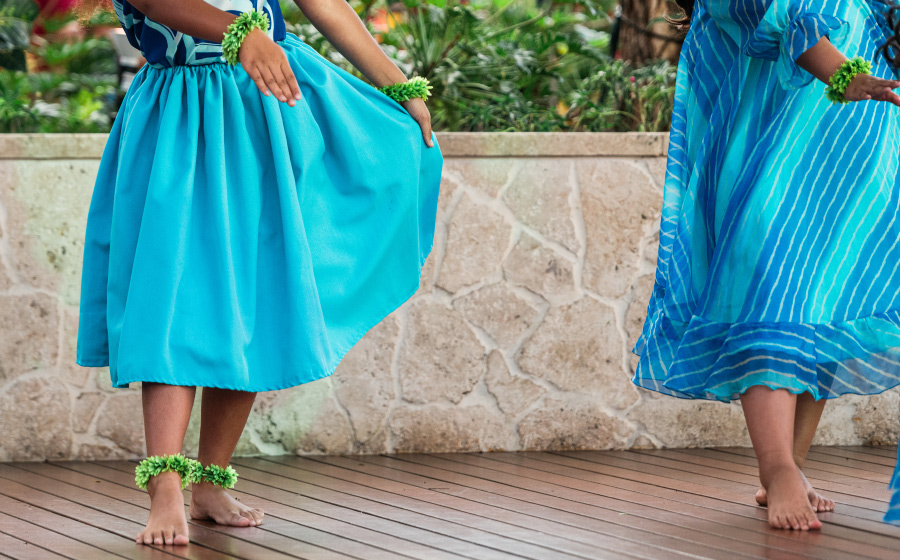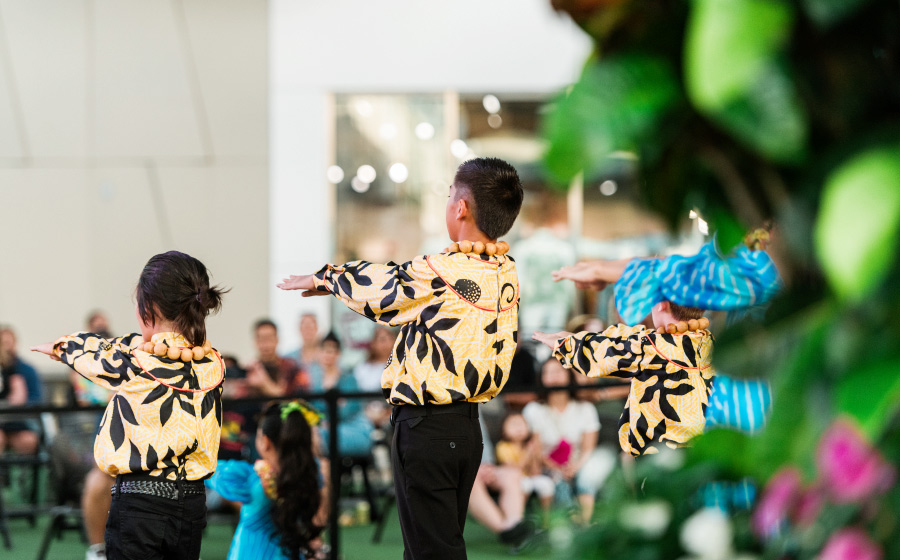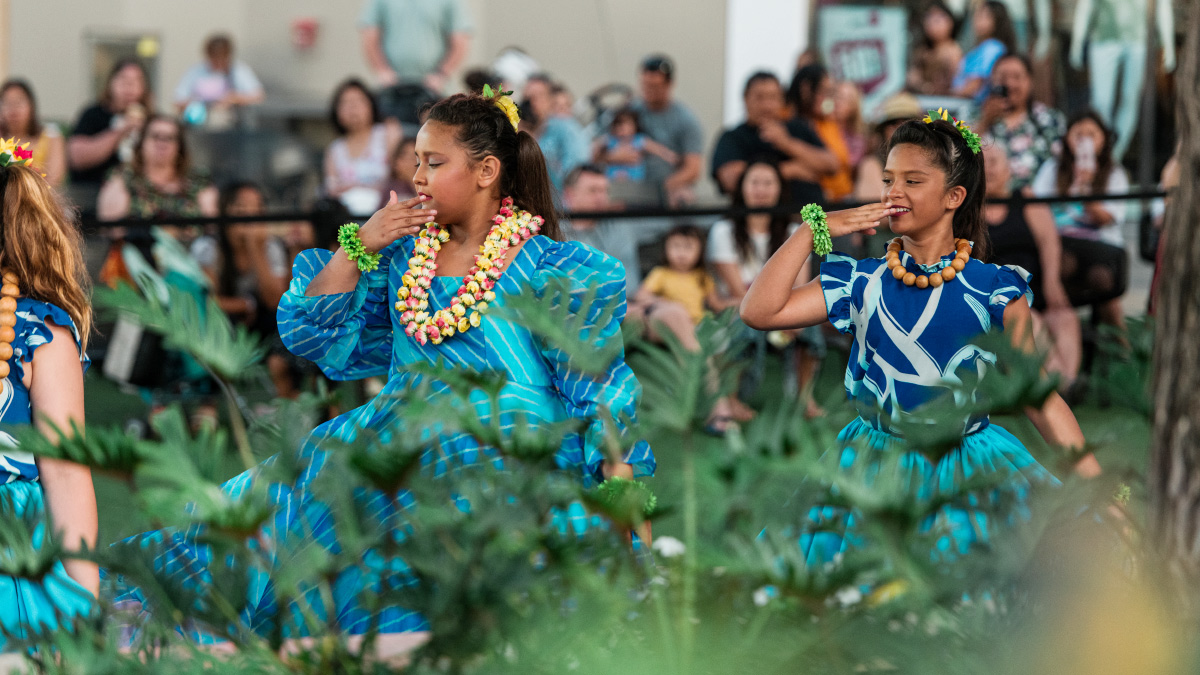At a storied hula halau in Kapolei, young dancers are taught both connection and camaraderie.
For the keiki (children) of Hālau Hula ‘O Hokulani, a hula hālau (school) at Ka Makana Ali‘i shopping center in Kapolei, living by the hālau’s 15 core rules is a way to honor their kumu (teachers), fellow students, and families. At any moment during a class or following a performance, the students may be asked to recite a rule by heart—such as “Come to class on time and be ready to learn,” or “I will give my mommy and daddy a big hug and kiss each day just because I love them.” With each declaration, the young dancers are reminded to bring a sense of respect, mindfulness, and community to every hula movement they make.

Hālau Hula ‘O Hokulani was founded in 1985 by Larry DeRego and the late Marlene Hokulani DeRego, a couple whose contributions to the art of hula and Hawaiian culture are legendary. Coming from strong hula lineages on both sides, the DeRegos began teaching hula to their own children, along with children from their Wahiawā neighborhood. As the hālau steadily grew into a large extended family united by Hawaiian culture and family values, “Uncle Larry” and “Aunty Hoku” created a unique expression of storytelling stemming from their marriage of hula styles.
“My dad’s hula lineage is very gentle, graceful, and elegant, whereas my mom’s is robust, vibrant, strong, and fierce,” says Kehaulani Kawai, the DeRegos’ daughter, who currently leads approximately 250 dancers in the hālau’s thriving keiki program. “One of my mom’s many mantras, ‘Dance with the fluidity of water, but with a spark of fire,’ stays at the forefront while we’re creating hula.”
Kumu Kehau and her sisters, Leinani Lauaki and Leonani Naho‘oikaika, are keeping the spark alive by running year-round hula classes, planning events, and preparing for competitions at home and abroad. Much more than a studio that teaches dancers the technical side of hula, Hālau Hula ‘O Hokulani strives to build character, cultivate creativity, and impart the traditional Hawaiian value of laulima (cooperation) in their students and, by extension, their families. From making lei, outfits, and adornments to learning the backstory of the mele (songs), the whole family is involved in a student’s hula journey from preparation to performance. “In the tradition of mom and dad, we try to always reinforce the idea that everyone rolling together in the same canoe can make anything happen,” says Kawai.
With classes starting at age 3 for girls and age 5 for boys, the keiki groups perform every other week and during holiday events for audiences at Ka Makana Ali‘i and throughout the community. While beginners are taught fundamental footwork, posture, and hand movements, intermediate students work on intricate choreography with hula implements such as pu‘ili (split bamboo sticks) and ‘uli‘uli (pebble-filled gourds with feather or tapa handles). At the advanced level, the dancers train for annual competitions, such as the Queen Lili‘uokalani Keiki Hula Competition on O‘ahu and the Iā ‘Oe E Ka Lā Hula

Competition in the San Francisco Bay Area. All students are invited to attend the hālau’s intense summer program, Nā Pua ‘O Keiki, where day-long classes weave Hawaiian culture, language, and crafts into the hula curriculum.
Every January, Hālau Hula ‘O Hokulani holds its Hō‘ike event, where a panel of hula mentors interviews each keiki dancer to get to know them outside of the classroom. In addition to recalling the hālau rules, the students are asked to share about their families and hobbies, give a brief presentation on a topic (the island of Kaua‘i was chosen for 2024), and display a talent other than hula. Over the years, the students have kept the mentor panels entertained with a wide range of skills, including ‘ukulele, drawing, videography, and cleaning and preparing a freshly caught fish.
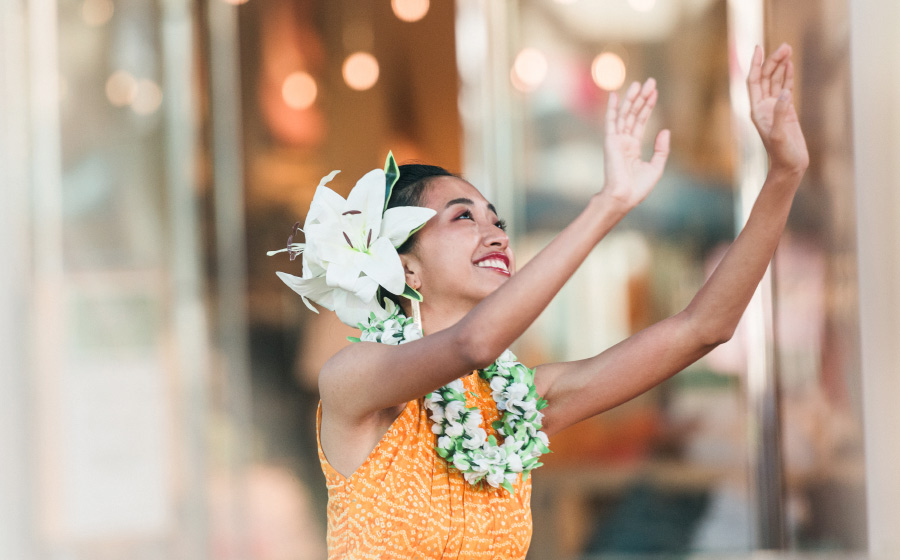
Inside the hālau, a “legacy wall” of 14 framed faces serves as a touchstone for the dancers to acknowledge the ancestors whose shoulders they stand upon and to honor the traditions and values handed down to them. On the top row are images of influential hula and Hawaiian cultural practitioners who inspired the hālau founders.
The second row chronicles the family’s hula lineage, and the third row features the three DeRego daughters, who are carrying the hālau’s legacy to new generations. “When the keiki lose their focus, I tell them to turn around and go dance to Aunty Hoku,” Kawai says. “It puts things into perspective and reminds them that we cannot do life without each other.”
Learn more, visit: halauhulaohokulani.org
Image Gallery
